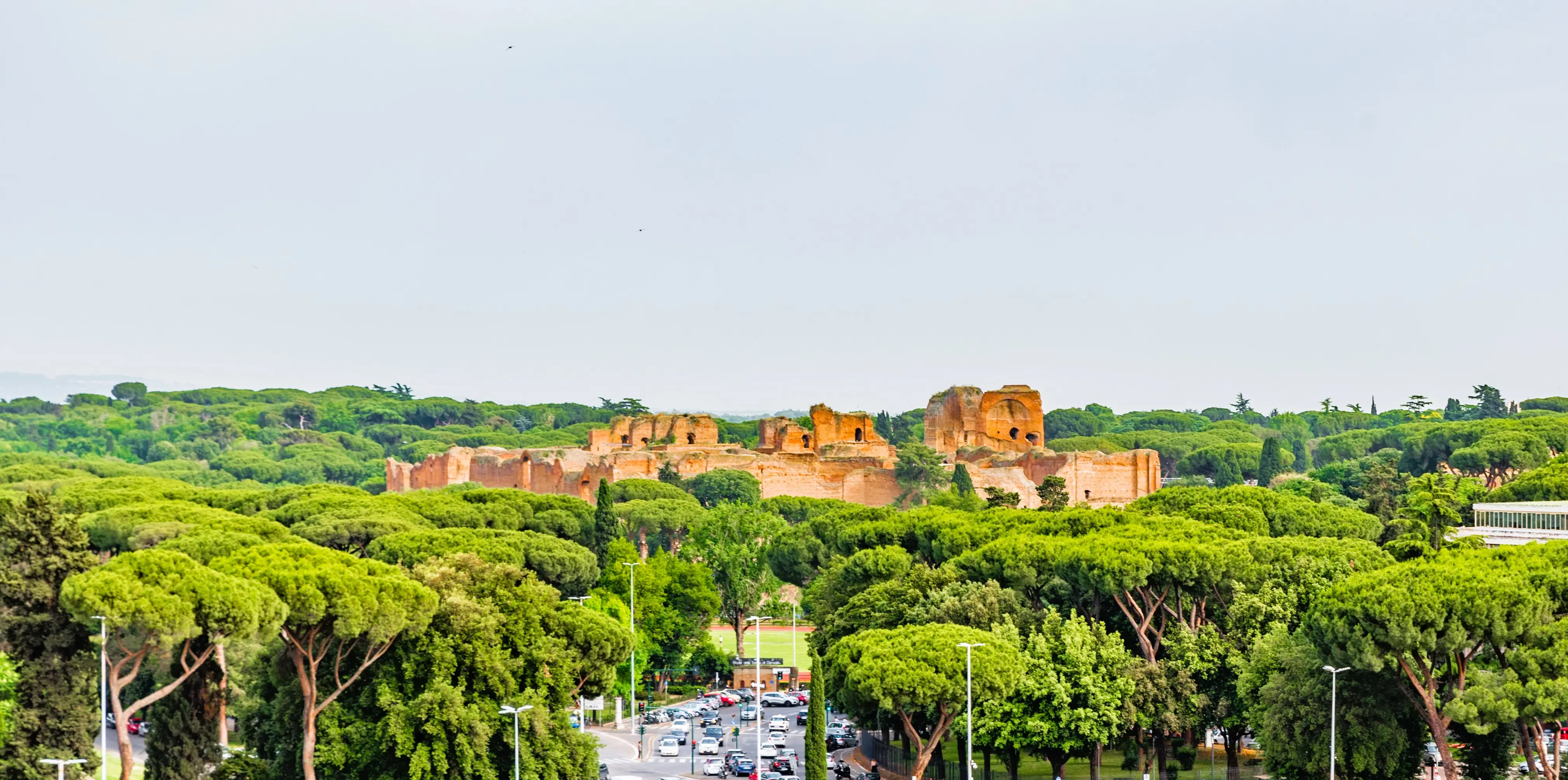Hello, curious explorers! 😊 Today on Bubbly Living, we’re diving into one of Rome‘s grandest and most awe-inspiring ancient sites: The Baths of Caracalla. Tucked just a short walk from the Colosseum, these ruins are a monumental reminder that wellness, leisure, and architecture went hand in hand in Ancient Rome. Come stroll through towering ruins, marvel at mosaic fragments, and imagine a time when bathing was a public, and very luxurious, affair.
🧬 A Palace for the People
Commissioned by Emperor Caracalla and completed around 216 CE, these baths were not a private palace, but they felt like one. Spanning a footprint of over 25 hectares, the complex could accommodate more than 7,000 visitors per day, making it one of the largest and most sophisticated bathing facilities of the Roman Empire.
This was more than a place to get clean, it was Rome’s ultimate wellness retreat. The complex featured:
- Hot, warm, and cold bathing rooms (caldarium, tepidarium, frigidarium)
- Saunas and steam rooms for deep relaxation
- A natatio (open-air swimming pool) surrounded by columns
- Twin libraries and spaces for reading and study
- Gymnasiums, exercise yards, and changing rooms
- Manicured gardens, fountains, and public art
Water was delivered via the mighty Aqua Marcia aqueduct, and the heating system relied on hypocausts: ingenious underground chambers that circulated hot air to warm the baths and floors. Even by today’s standards, the Baths of Caracalla were a marvel of design and efficiency.
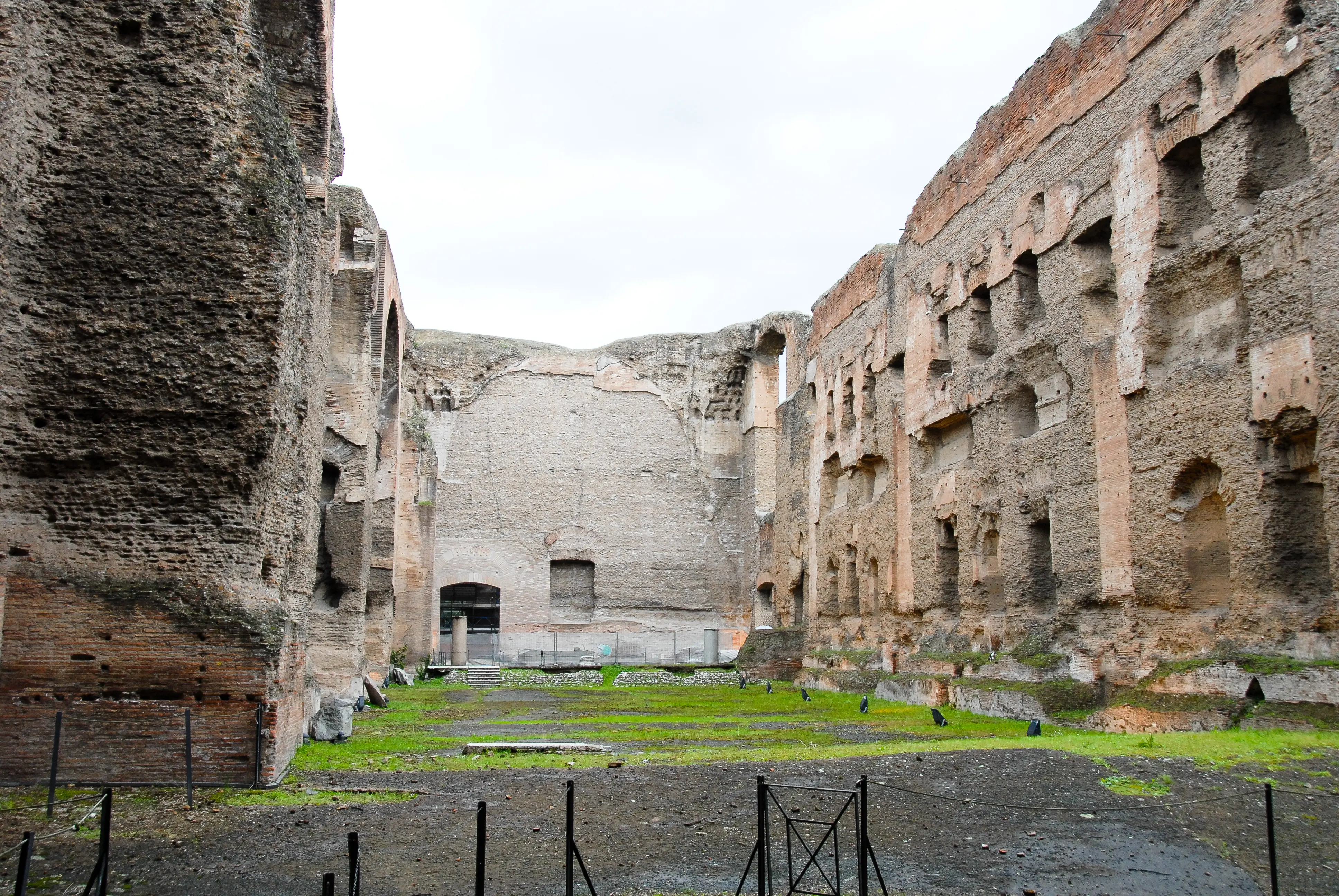
🎨 Art, Architecture & Ambition
Even in their ruined state, the grandeur of the Baths of Caracalla is unmistakable. As you wander through the enormous barrel-vaulted halls, soaring arches, and vast chambers, try to picture how the space once gleamed with colored marble, glass mosaics, stucco reliefs, and gilded ceilings.
Famous artists like Giovanni Battista Piranesi and architects from the Renaissance onward were inspired by the geometric harmony and majestic proportions found here. Some of the most exquisite floor mosaics, including those depicting athletes and mythological figures, have been relocated to museums, but enough remains in situ to ignite the imagination.
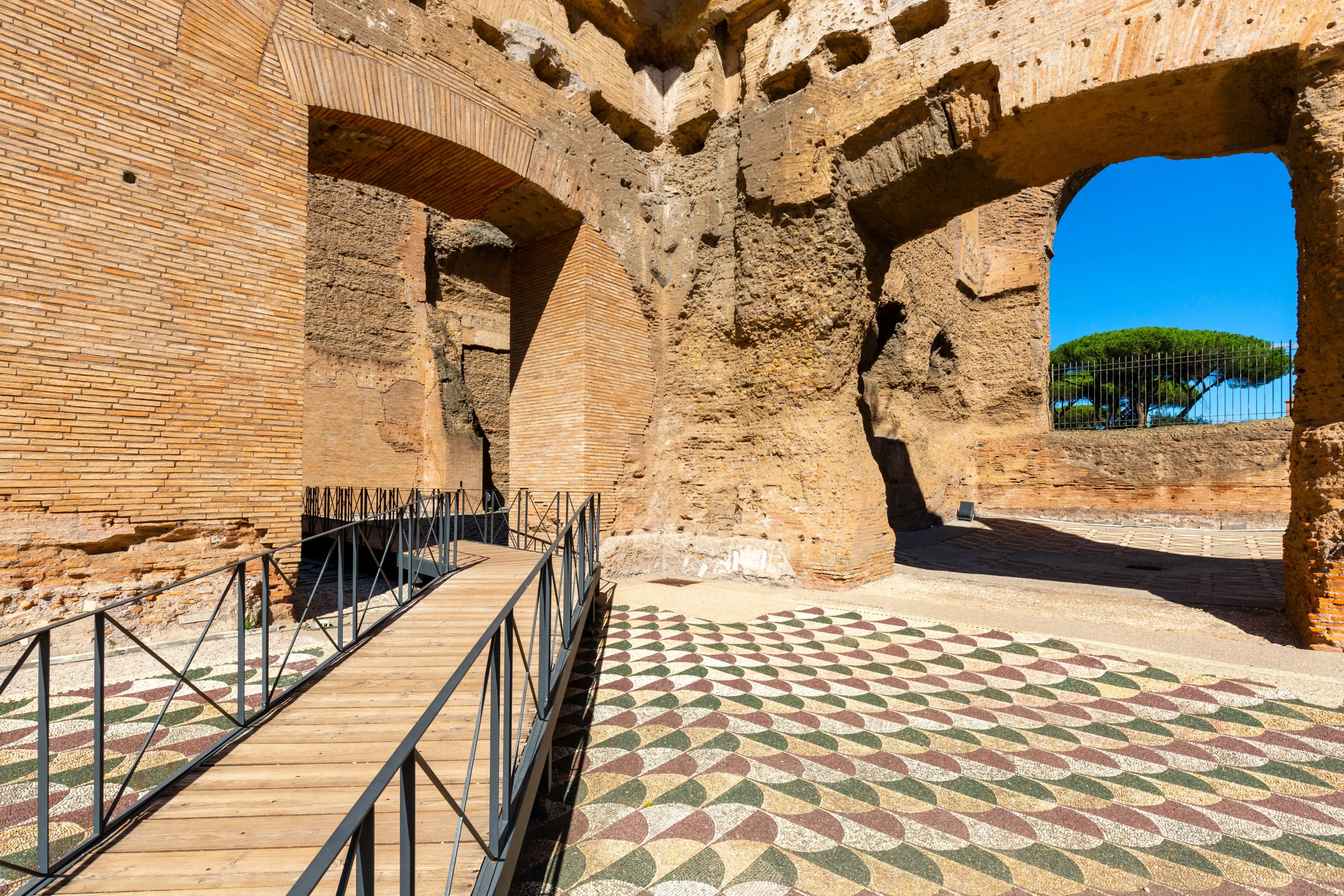
From the sculpted fountains to the ornamental niches that once housed statues of gods, emperors, and heroes, this was architecture as experience, a space meant to elevate the body and the soul.
📚 Life at the Baths
To the ancient Romans, the Baths were not simply about hygiene, they were a central part of daily life and social fabric. Here, citizens of all classes came together to sweat, soak, and socialize. Imagine bustling halls filled with conversation, the sound of water echoing off tiled walls, athletes practicing calisthenics in the palaestra, and philosophers debating ideas in the shade of a portico. There were even areas for massages, beauty treatments, and barber services.
The Baths were accessible through a nominal fee, and sometimes even free entry was granted, especially during festivals or under the generosity of the emperor. Time slots were designated for men and women, and different spaces offered tailored experiences, much like today’s modern spas.
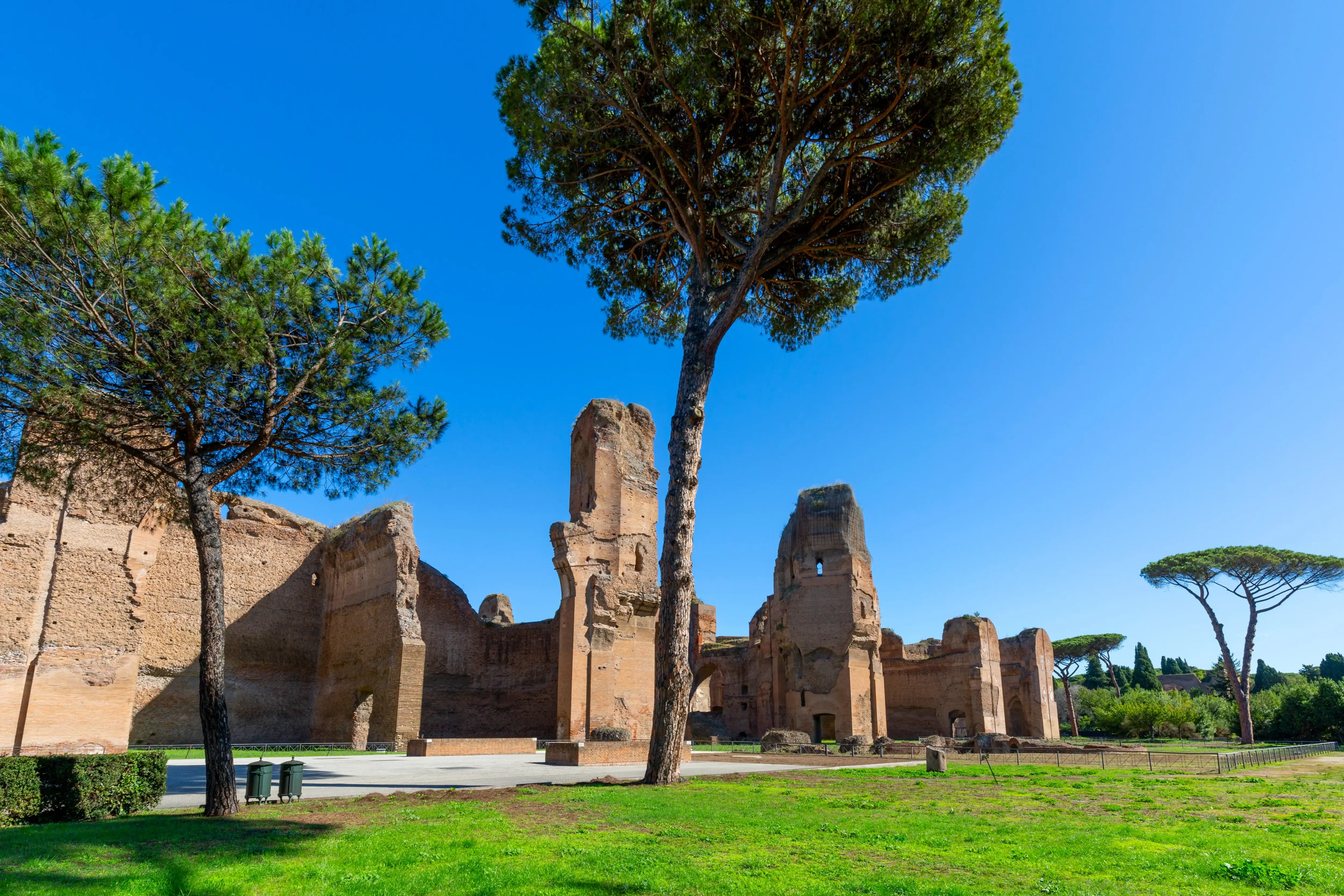
🔍 Still Grand, Still Relevant
Though the complex was abandoned after the aqueducts were severed during the Gothic Wars in the 6th century, the spirit of the Baths lives on. They continue to serve Rome, not through water and heat, but through culture and inspiration.
- In summer, the space transforms into a majestic open-air opera venue, adding drama and echo to the arts.
- Students and scholars still study its layout for its engineering brilliance and its influence on later monumental architecture.
- Visitors from around the globe come not just for the history, but for a chance to reflect on how public beauty once shaped public life.
The Baths of Caracalla whisper a timeless message: that well-being, artistry, and accessibility can, and should, go hand in hand.
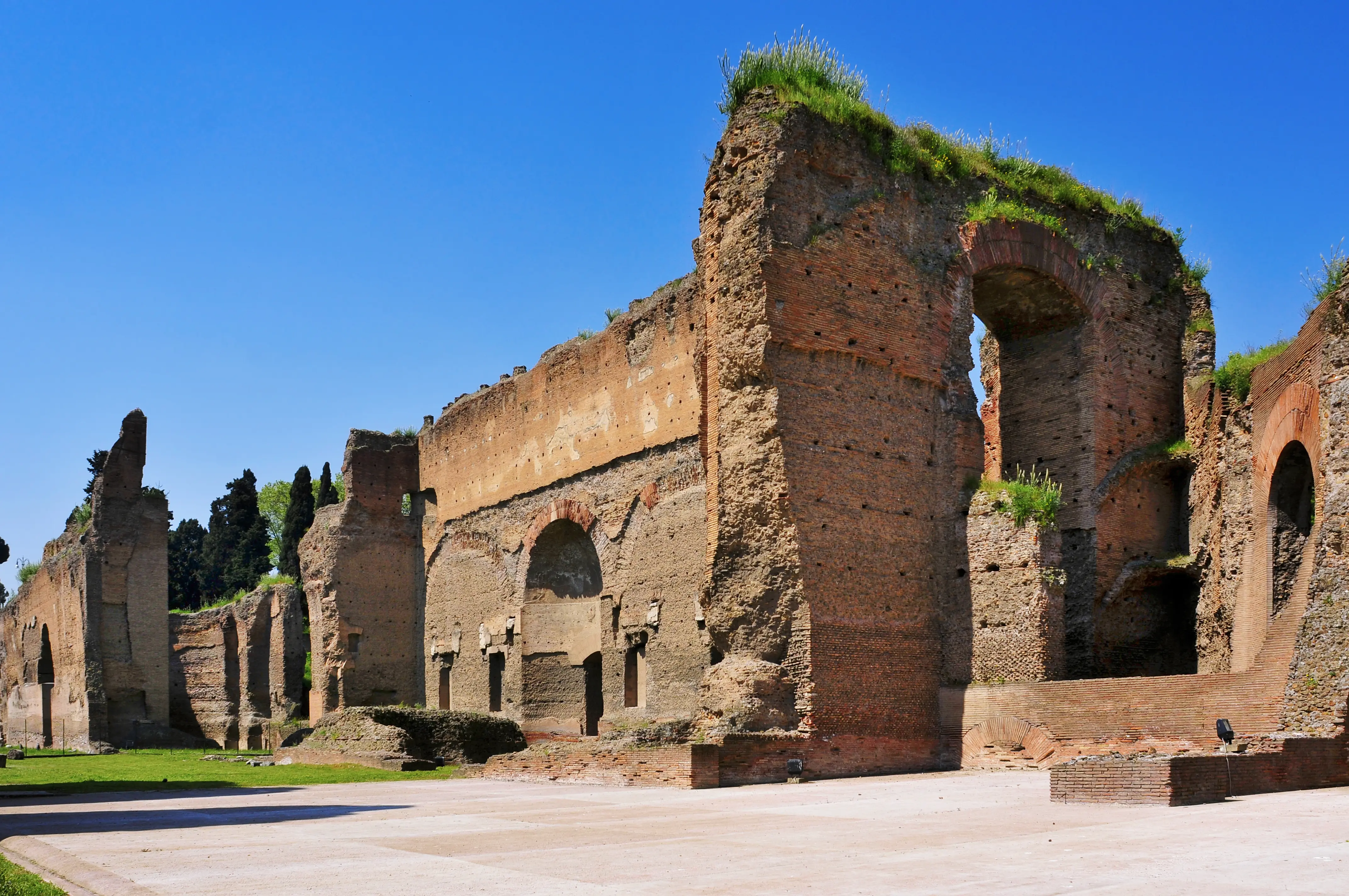
🌐 Practical Tips for Visiting
Planning your trip? Here’s what you need to know:
- ⏰ Opening Hours: Usually 9:00am until sunset. Check official sites for updates.
- 🌐 Location: Viale delle Terme di Caracalla, Rome. Closest metro: Circo Massimo (Line B). It’s also a scenic 15-minute walk from the Colosseum.
- 💳 Tickets: Standard admission is around €8-10. Combo tickets with nearby sites like the Baths of Diocletian or the Roman Forum may be available.
- 📸 Photo Tips: Arrive early to enjoy softer light and fewer crowds. Wide-angle shots capture the scale best, but don’t miss the details: mosaics, arches, and contrast between nature and stone.
- ♿ Accessibility: Most paths are flat but uneven. Wear comfortable shoes and bring water. Portions are shaded, but Rome’s summer sun is strong.
- 🎭 Events: If you’re visiting in summer, check listings for opera and classical performances under the stars. It’s an unforgettable way to experience this historic site.
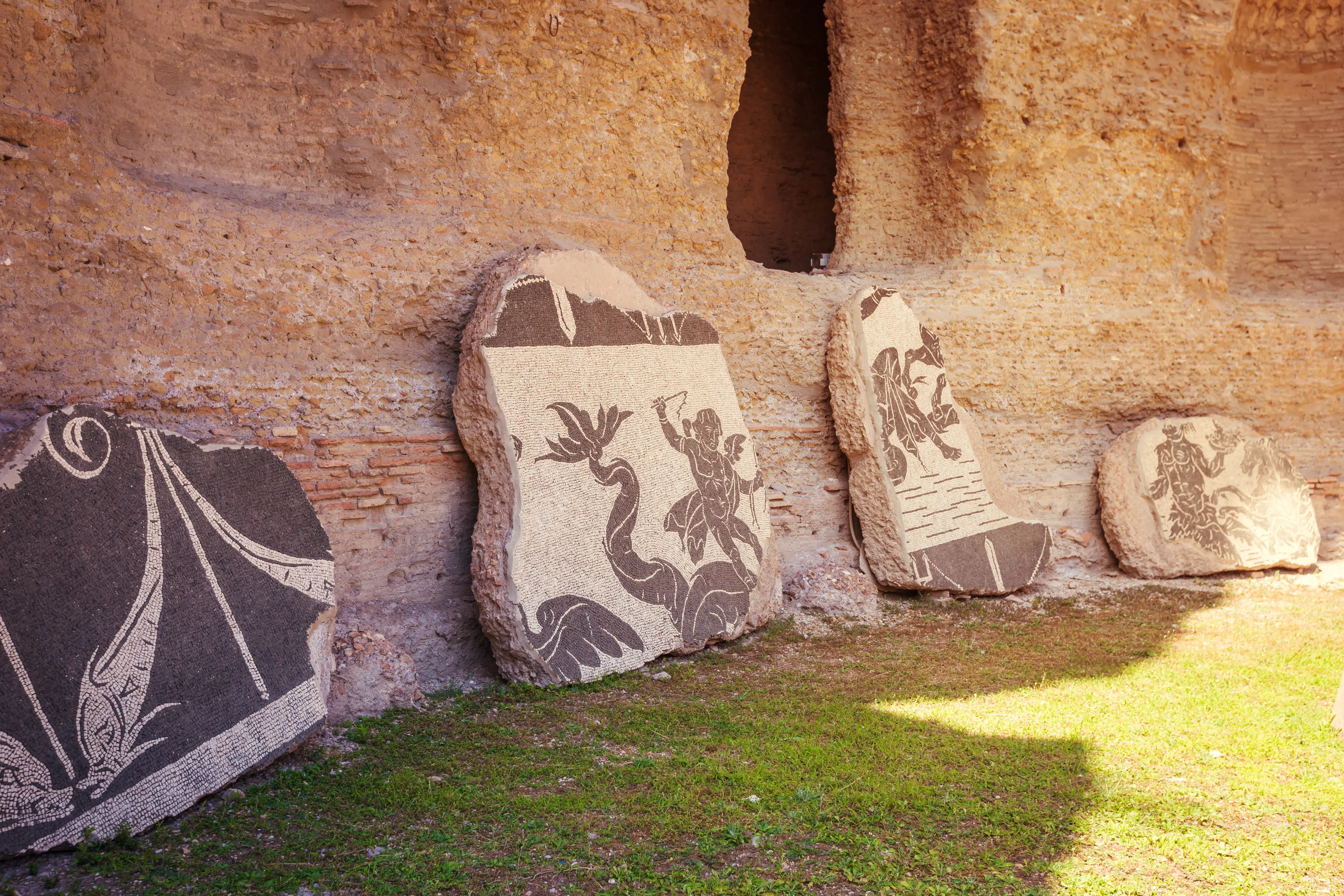
Final Reflections
The Baths of Caracalla are more than ruins, they are an echo of how a civilization prioritized joy, community, and holistic wellness. Standing among the arches and greenery, you’re reminded that luxury doesn’t always mean exclusivity. In ancient Rome, beauty and leisure were offered to the people: free-flowing, democratic, and grand.
So on your next Roman adventure, let this hidden gem enrich your journey. Pause. Reflect. Wander. And let the past bathe you in its wisdom.
With warmth from the Eternal City,
Bubbly 💛

